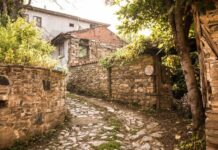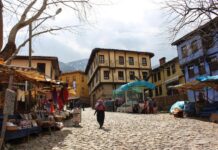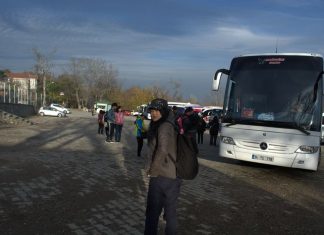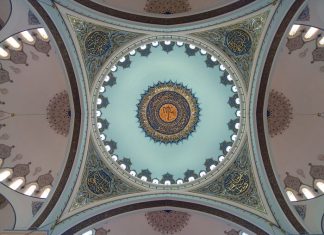They were there for a long time waiting for a ship to get ready. Afterwards they sailed during the whole of the winter, from the feast of St. Andrew [30 November] until a week before Easter. Then they landed at the city of Constantinople, where the bodies of three saints, Andrew, Timothy and Luke the Evangelist, lie beneath one altar, whilst the body of St. John Chrysostom lies before another.
His tomb is there where, as a priest, he stood to celebrate Mass. Our bishop stayed there for two years and had an alcove in the church so that every day he could sit and gaze upon the place where the saints lay at rest. Thence he went to Nicea, where formerly the Emperor Constantine held a council at which three hundred and eighteen bishops were present, all taking an active part.
The church there resembles the one at Mount Olivet, where our Lord ascended into heaven; and in the church are all the portraits of the bishops who took part in the Council. Willibald went there from Constantinople to see how the church was built, and then returned by water to Constantinople.
After two years they set sail from there with the envoys of the Pope and the Emperor[1] and went to the city of Syracuse in the island of Sicily. Thence they came to Catania and then to Reggio, a city of Calabria.
They embarked again for Volcano, where the Hell of Theodoric is. When they arrived there they disembarked to see what this inferno was like. Willibald, who was inquisitive and eager to see without delay what this Hell was like inside, wanted to climb to the top of the mountain underneath which the crater lay: but he was unable to do so because the ashes of black tartar, which had risen to the edge of the crater, lay there in heaps: and like the snow which, when it drops from heaven with its falling masses of flakes, heaps them up into mounds, the ashes lay piled in heaps on the top of the mountain and prevented Willibald from going any farther.
The church of St. Bartholomew
All the same, he saw the black and terrible and fearful flame belching forth from the crater with a noise like rolling thunder: he gazed with awe on the enormous flames, and the mountainous clouds of smoke rising from below into the sky. And that pumice stone which writers speak of he saw issuing from the crater, thrown out with flames and cast irlto the sea, then washed up again on the seashore by the tide, where men were collecting it and carting it away. After they had satisfied their curiosity with the sight of the fearsome and terrible burnirlg fire, its fumes, its stinking smoke and its shooting flames, they weighed anchor and sailed to the church of St. Bartholomew the Apostle [at Lipari], which stands on the seashore, and they came to the mountains which are called Didyme, and after praying there they spent one night.
Read More about War with the Scyths part 22








